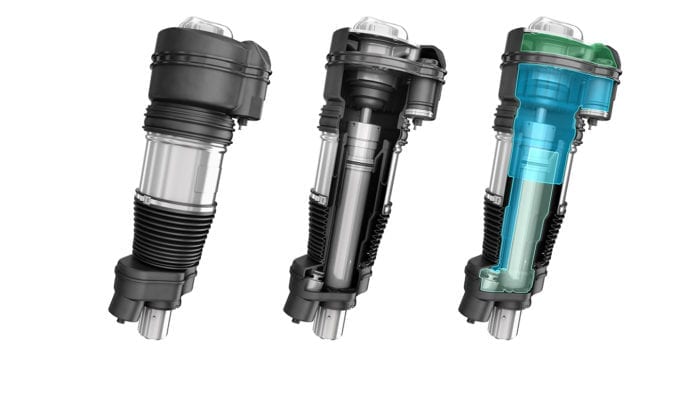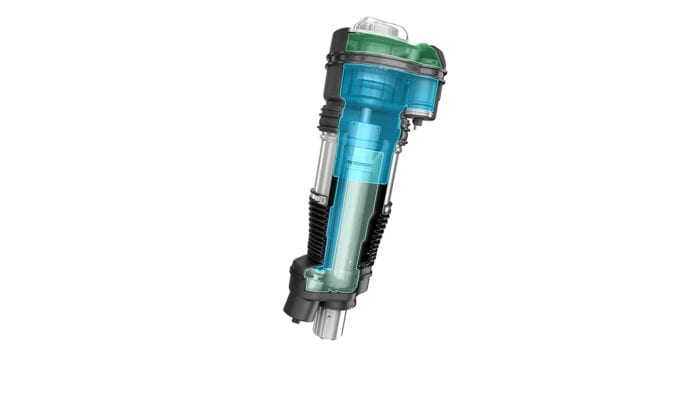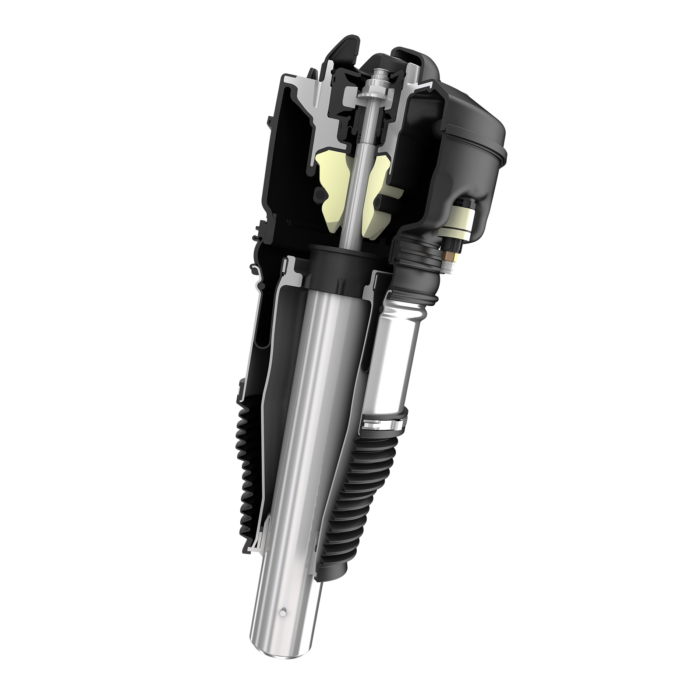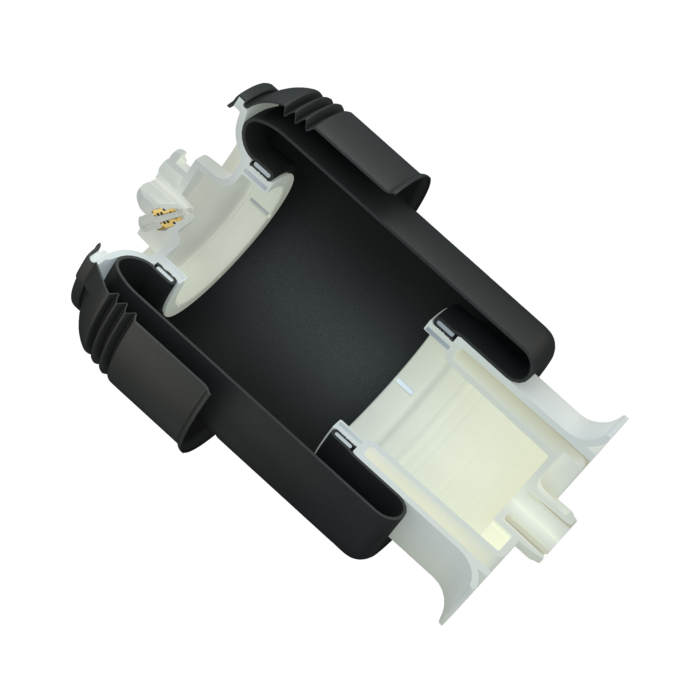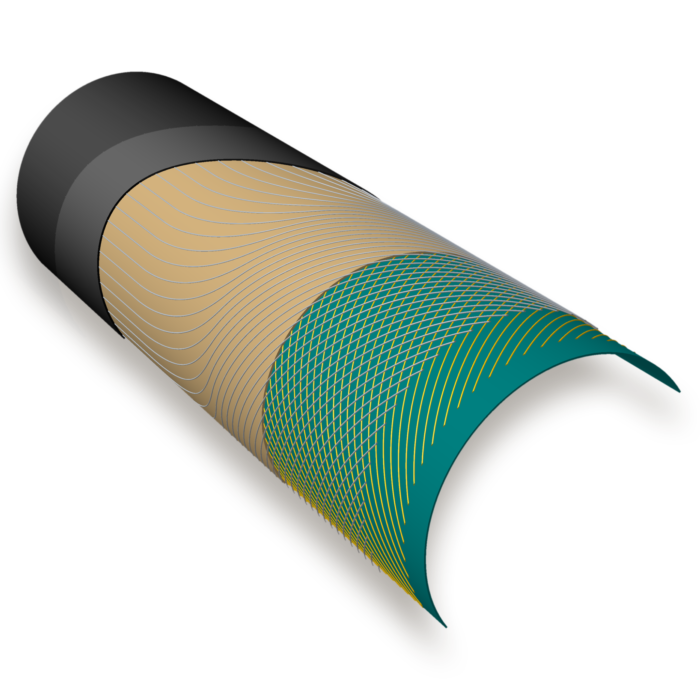Light Vehicle Products | Air Springs
Switchable Three-Chamber Air Springs
Resolve the conflicting objectives of comfort and good driving dynamics
Resolve the conflicting objectives of comfort and good driving dynamics
Air spring applications at the rear axle or on both axles are becoming increasingly popular for electric vehicles. Air springs enable to control the levelling of the car. This enables optimized aerodynamics at high speeds as well as airflow guidance beneath the car. The latter is especially important for electric vehicles, since it facilitates the efficient passive cooling of battery packs, which are predominantly positioned in the floor area Besides that the air springs support to keep a minimum ground clearance to secure the batteries in bad road conditions.
Concept of the three-chamber air spring system: The larger the available air volume, the softer the springs; the smaller the air volume, the stiffer the springs. Vibracoustic switchable air springs allow the stiffness of springs to be doubled over four gradients – from very soft to extremely stiff.
To enable this, Vibracoustic switch valves control the air flow rates and their openings need to be adequately sized for the correct amount of air to pass. The switching times also need to be short enough to enable stiffness switches to be made at speed. To ensure that switching noises are not perceptible by passengers, an optimized membrane is used. This feature is particularly important for electric vehicles, where there is no combustion noise or vibration from the motor to mask this type of noise.
To build the new geometries of the air spring, including the straightforward creation of air volume chambers, Vibracoustic uses an innovative hot gas welding manufacturing process for the air spring top pot. This allows more efficient use of the limited packaging space in the suspension area by combining various plastic and aluminum parts. The result is a weight reduction of the top pot by up to 30%.
Switchable dual-chamber air spring systems are also possible. They only offer two different stiffness levels, but still enable effective roll stabilization and are therefore a cost-efficient system to meet customer demands for improved comfort and driving dynamics in high- and medium-segment vehicles.
About Air Springs
Air springs keep the vehicle at a constant level, regardless of how heavy its load is. They allow to lower the car at high speeds in order to improve aerodynamics and thus increase range. Air springs can also optimize airflow under the car for passive battery cooling in electric vehicles and they protect the batteries in bad road conditions and secure always a minimum ground clearance. Furthermore, switchable air springs can provide different degrees of stiffness, allowing quick transition between a firm suspension for confident and safe driving behavior, and a more comfortable setup for long road trips.
more
Vibracoustic supplies air springs for the majority of all light vehicles based on air suspension systems, making us one of the leading global air spring manufacturers.
Our products and technologies can be delivered separately or as a unit with the damper. The Vibracoustic portfolio ranges from front and rear axle air springs, to switchable multi-chamber air springs Our comprehensive air springs know how makes us a reliable and trusted component and module supplier for air spring applications of all sorts.
The key element in air springs for light vehicles are the rubber bellows. These essentially determine the comfort and service life properties. Vibracoustic offers three different types of bellows – axial, cross-ply and ZAX – which differ in terms of the structure of their embedded reinforcing fibers.
In an axial sleeve, the fibers embedded in the elastomer run axially to the deflection direction. The cross-ply bellows has two layers of reinforcing elements, placed at an angle to each other. Unlike in a fabric, these elements are not connected. The cross-axial bellows, or ZAX bellows, combines the great torsion decoupling capability of an axial sleeve with the dimensional stability of a cross-ply bellows.


